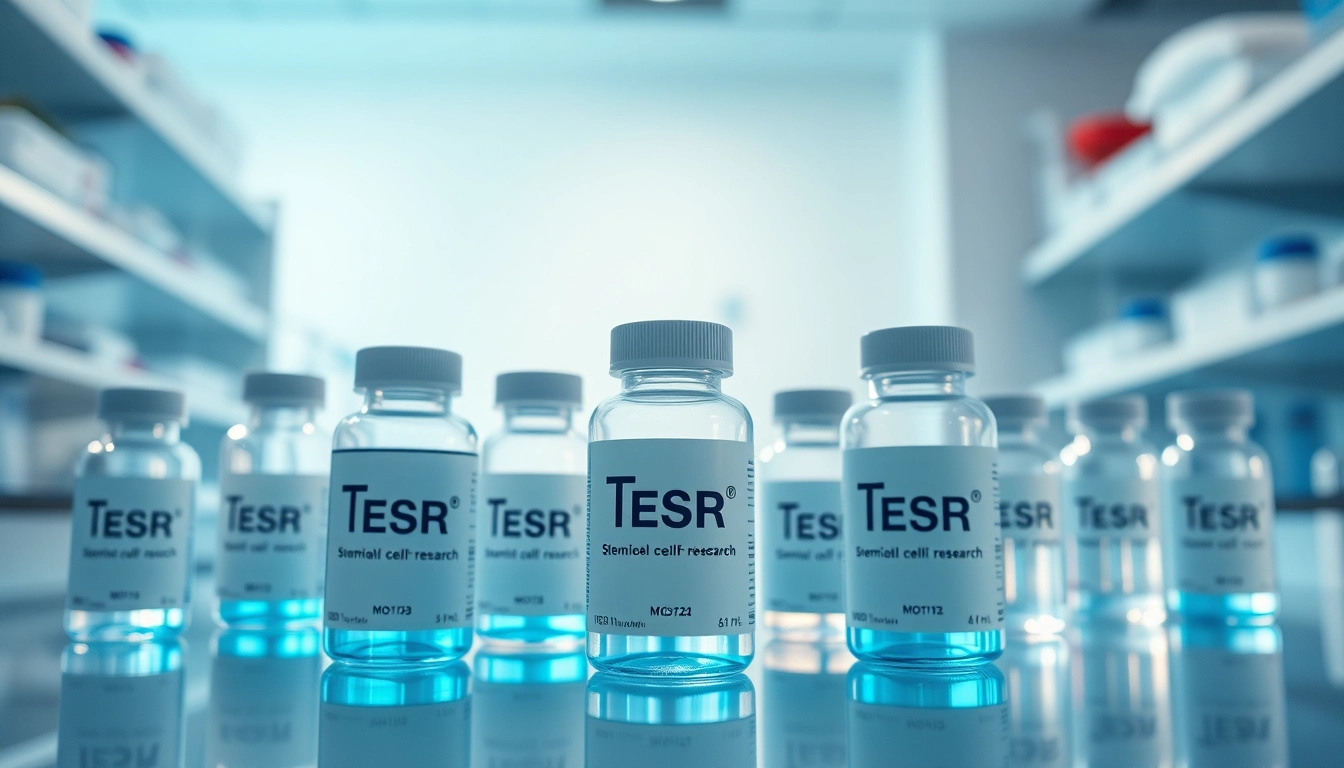Understanding TeSR™ Feeder-Free Media
In the realm of stem cell research, the all check of culture media choices plays a pivotal role in the success of experiments. One particular line of products, the TeSR™ family of feeder-free media, has gained significant attention due to its efficacy in supporting human pluripotent stem cells (hPSCs). These media allow researchers to cultivate embryonic (ES) and induced pluripotent stem cells (iPSCs) in a defined environment that fosters optimal growth and maintenance without the need for feeder layers. This article delves into the characteristics, advantages, applications, and best practices associated with TeSR™ feeder-free media.
What is TeSR™ Media?
TeSR™ media are specially formulated culture substances designed for the maintenance and differentiation of human pluripotent stem cells. Originally developed from foundational research in the laboratory of Dr. James Thomson, these media are rooted in scientific studies aimed at improving the culture conditions for human ES and iPS cells. TeSR™ media provide a precise blend of nutrients, growth factors, and cytokines that are critical for sustaining cellular functions and ensuring high pluripotency levels.
Advantages of Feeder-Free Culture
The shift to feeder-free culture systems has revolutionized stem cell research. Here are some of the pivotal benefits:
- Reduced contamination risk: By eliminating feeder layers, the potential for microbial contamination decreases significantly, providing a cleaner and more reliable research environment.
- Improved consistency: Feeder-free media, like those in the TeSR™ family, are manufactured under stringent regulatory standards, which enhances the reproducibility of research results.
- Defined compositions: Researchers benefit from defined culture formulas. This ensures that any changes in cell behavior can be more reliably attributed to experimental conditions rather than variances in substrate quality.
- Scalability: The ease of scaling stem cell cultures for larger experiments becomes feasible with feeder-free systems, thus supporting high-throughput applications.
The Role of TeSR™ in Pluripotent Stem Cell Research
TeSR™ media serve several critical functions in pluripotent stem cell research, including:
- Maintenance of pluripotency: The TeSR™ family nourishes pluripotent stem cells, facilitating their growth and maintenance in a state that retains their ability to differentiate into various cell types.
- Facilitating differentiation: Future studies can utilize tailored TeSR™ formulations that aid the differentiation of stem cells into specific lineages, enhancing research outcomes.
- Enabling reprogramming: Certain TeSR™ products are specially designed to support the reprogramming of somatic cells into iPS cells, allowing for groundbreaking applications in regenerative medicine.
Key Products in the TeSR™ Family
mTeSR™ Plus: The Enhanced Medium
mTeSR™ Plus is recognized as a leading feeder-free culture medium, developed to provide researchers with a more reliable and efficient tool for hPSC maintenance. This medium is enhanced with stabilized components, including FGF2, which promotes cell growth while offering superior pH buffering capabilities. Notably, mTeSR™ Plus allows for a more flexible research schedule, as it minimizes the need for frequent media changes without compromising cell quality.
Comparing TeSR™-E8™ and mTeSR™1
TeSR™-E8™ represents an advanced formulation that caters to researchers seeking a simpler yet effective maintenance medium. Compared to mTeSR™1, which has been widely adopted in the scientific community, TeSR™-E8™ includes only the essential components needed for hPSC maintenance. With a focus on reducing complexity while ensuring optimal performance, this medium has gained traction in many laboratories.
Specialized Media for Differentiation
In addition to general maintenance media, the TeSR™ family includes specialized formulations like TeSR™-E5 and TeSR™-E6, designed to guide cells towards specific differentiation pathways. These media are essential for researchers aiming to develop specific cell types from pluripotent layers, paving the way for therapeutic advancements across a variety of fields.
Applications of TeSR™ Media in Research
Reprogramming Human Cells
TeSR™ media play a crucial role in the reprogramming of human somatic cells to induced pluripotent stem cells (iPSCs). The formulations enable the successful transition from differentiated states back to pluripotency, allowing for extensive study and application of human cells in regenerative medicine.
Maintaining Pluripotency in hPSCs
One of the most significant applications of TeSR™ media is the maintenance of pluripotency in hPSCs. These media support cell morphology, growth, and the expression of key pluripotency markers, ensuring that cells remain undifferentiated and suitable for downstream applications.
Testing Toxicity with iPS Cells
In toxicology studies, the ability to utilize hPSCs can provide a powerful tool for assessing drug toxicity and efficacy. TeSR™ media facilitate the creation of iPSC lines that can then be applied in toxicity tests, guiding the development of safer therapeutic agents.
Best Practices for Using TeSR™ Media
Proper Storage and Handling Techniques
Ensuring optimal performance from TeSR™ media requires adherence to strict storage and handling protocols:
- Temperature control: Store media at -20°C for long-term preservation and thaw only the required amounts for a single use to maintain sterility and integrity.
- Avoid freeze-thaw cycles: Repeated freeze-thaw cycles can degrade media components, leading to reduced functionality.
Common Challenges and Solutions
While utilizing TeSR™ media, researchers may face various challenges:
- Cell aggregation: Adjusting the culture conditions, including optimizing cell density and media formulation, can mitigate issues of cell clumping.
- Media acidification: Employing enhanced formulations like mTeSR™ Plus can help maintain pH levels, ensuring optimal conditions for cellular functions.
Performance Metrics for Success
To assess the effectiveness of TeSR™ media, researchers should track several key performance metrics:
- Cell growth rates: Benchmarking against previously established norms for specific cell lines can provide insights into media suitability.
- Pluripotency validation: Regularly verifying the expression of key markers associated with pluripotency is necessary to confirm that cells remain undifferentiated.
Expert Interviews and Insights
Dr. Joseph C. Wu on Hematopoietic Cell Differentiation
Dr. Wu’s expertise offers significant insights into utilizing TeSR™ media for differentiating stem cells into hematopoietic lineages. His research underscores the media’s capacity to facilitate the development of functional blood cells for therapeutic uses.
Dr. Christine Mummery on Cardiomyocyte Development
Dr. Mummery highlights the importance of TeSR™ media in developing cardiomyocytes, enabling researchers to advance toward treatments for cardiac diseases by efficiently deriving heart cells from stem cells.
Future Directions for TeSR™ Media in Research
The TeSR™ family is poised to drive forward innovations in stem cell research. With ongoing developments targeting more specialized applications and regulatory standards, the future looks promising for researchers relying on these advanced culture media.



